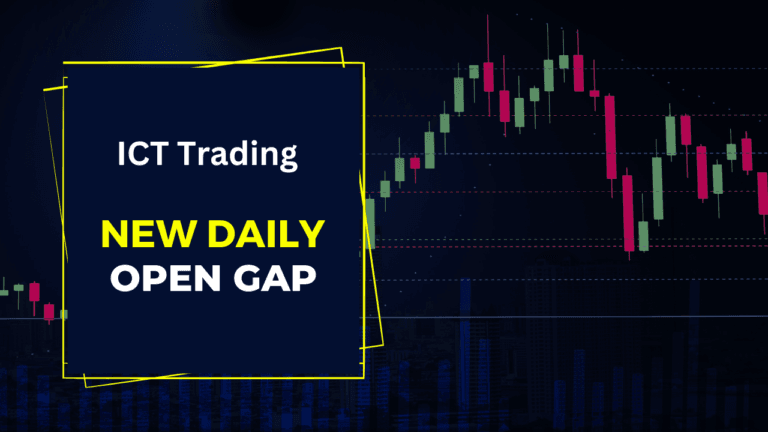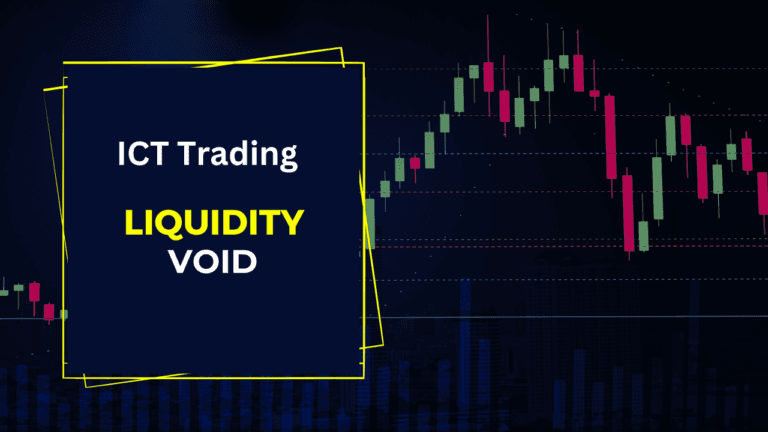Understanding ICT Killzones

In the world of trading, timing is everything. One crucial concept that can significantly enhance your trading strategy is ICT Killzones. Developed by the Inner Circle Trading (ICT) framework, killzones are specific time periods during the trading day when the market is particularly active and volatile. This article will explore what ICT killzones are, their significance, and how to effectively use them in your trading strategy. By understanding and leveraging these killzones, you can make more informed trading decisions and increase your chances of success.
Introduction to ICT
ICT is a trading methodology created by Michael J. Huddleston. It focuses on understanding market structure, liquidity, and trader psychology. A key aspect of this methodology is the concept of killzones, which are defined as specific timeframes in the trading day when price action tends to be more predictable and offers greater opportunities for traders.
Understanding ICT killzones is vital for traders looking to optimize their strategies. These periods are characterized by increased volatility and trading volume, making them ideal for entering and exiting positions. The importance of these killzones lies in their potential to align with the institutional trading activities, which can significantly influence market movements. By recognizing and utilizing these killzones, traders can position themselves to capitalize on price changes.
What are ICT Killzones?
ICT Killzones refer to specific times during the trading day when the market tends to exhibit heightened activity and volatility. These periods are crucial for traders because they often coincide with key market events and the arrival of institutional orders. Understanding what these killzones are can help traders make informed decisions.
Definition of ICT Killzones
In simple terms, ICT killzones are designated time slots within the trading day that traders monitor closely for potential price movements. These periods typically include the opening hours of major market sessions, such as the London and New York sessions. During these times, the market often sees a surge in trading activity, which can lead to significant price shifts.
Role of Killzones in Trading Strategy
The role of killzones in a trader’s strategy cannot be overstated. By focusing on these specific timeframes, traders can enhance their chances of executing profitable trades. The reason behind this is that institutions and large traders tend to place their orders during these killzones, leading to increased liquidity and volatility.
In summary, ICT killzones are essential for understanding market behavior and making strategic trading decisions. By incorporating these periods into your trading strategy, you can better navigate the complexities of the financial markets.
The Psychology Behind Killzones
The psychology of trading plays a crucial role in understanding ICT killzones. Traders are not just reacting to price movements; they are also influenced by their emotions, biases, and market sentiment. During killzones, the behavior of traders—both retail and institutional—can create significant price action that may seem unpredictable at first glance.
How Trader Psychology Influences Market Movements During Killzones
During killzones, the market often experiences heightened emotional responses. Traders may feel excitement, fear, or anxiety, leading them to make quick decisions based on their psychological state. For instance, a trader might see a price drop during a killzone and panic, selling off their assets at a loss. Conversely, another trader might perceive an opportunity and buy in, pushing the price even further.
Understanding this psychological aspect can help traders better predict price movements. When many traders react similarly, it can create self-fulfilling prophecies. If a large number of traders believe that a particular killzone will lead to a price increase, their buying actions can indeed drive prices up, validating their initial belief.
Importance of Timing and Market Behavior in Killzones
Timing is crucial in trading, especially during killzones. Traders must be aware of how their actions and the actions of others can affect market behavior. For example, as the market approaches the end of a killzone, traders might rush to make their trades, leading to increased volatility.
Additionally, understanding the typical behaviors during different killzones can aid in developing effective strategies. Recognizing patterns, such as increased buying pressure during the New York Open, allows traders to align their trades with market sentiment and improve their decision-making processes.
Types of ICT Killzones
There are several types of ICT killzones that traders should be aware of, each characterized by unique trading behaviors and market conditions. By understanding these killzones, traders can tailor their strategies to maximize their chances of success.
Overview of Different Killzones
- London Open Killzone:
This killzone occurs at the beginning of the London trading session, which is known for its high volatility and liquidity. As one of the most significant financial centers globally, London attracts a large volume of orders, making this killzone ideal for traders looking to capitalize on rapid price movements. - New York Open Killzone:
The New York session is another critical killzone, often experiencing intense market activity as it overlaps with the closing of the London session. Traders often look for opportunities in this timeframe, as institutional traders are actively placing orders, which can lead to significant price swings. - Asian Session Killzone:
While typically quieter than the London and New York sessions, the Asian session has its own unique characteristics. The Tokyo Open can present opportunities for traders focusing on currency pairs related to the Asia-Pacific region. Understanding the dynamics of this killzone is essential for those trading during these hours.
Characteristics of Each Killzone
Each type of ICT killzone has distinct characteristics that can influence trading decisions:
- Liquidity: Higher liquidity during London and New York opens means more significant price movements.
- Volatility: Killzones often see increased volatility, presenting both opportunities and risks for traders.
- Market Sentiment: Traders should be aware of the prevailing sentiment during each killzone, as this can dictate price direction.
Significance of Market Sessions and Their Impact on Trading Strategies
Recognizing the significance of these market sessions and their corresponding killzones can help traders create well-informed strategies. For instance, a trader might choose to focus their efforts on the London Open to take advantage of the higher volatility or set stop-loss orders tighter during the New York Open due to the anticipated rapid price movements.
By aligning trading strategies with the unique characteristics of each killzone, traders can improve their chances of making successful trades.
How to Identify ICT Killzones
Identifying ICT killzones is essential for traders looking to leverage the opportunities presented during these specific timeframes. By understanding how to pinpoint these killzones, traders can better time their entries and exits, maximizing their chances for successful trades.
Tools and Techniques for Identifying Killzones
- Market Sessions:
One of the most straightforward ways to identify ICT killzones is by knowing the market opening and closing times. The London Open (around 3 AM to 4 AM UTC) and the New York Open (around 8 AM to 9 AM UTC) are the primary killzones traders should focus on. - Economic Calendar:
Keep an eye on economic news releases that can coincide with killzones. Major reports, such as non-farm payrolls or interest rate decisions, can lead to increased volatility during these times. By using an economic calendar, traders can prepare for potential price movements aligned with these announcements. - Technical Analysis Tools:
Utilizing technical analysis tools like candlestick patterns, support and resistance levels, and moving averages can help traders spot price action that aligns with killzones. For instance, a sudden spike in volume during a killzone can indicate the presence of institutional traders, suggesting a possible opportunity.
Common Patterns and Signals During Killzones
During ICT killzones, traders should be on the lookout for specific patterns and signals that indicate potential trading opportunities:
- Breakouts: A breakout above a significant resistance level during a killzone can signal a strong upward move, presenting a potential buying opportunity.
- Reversals: If the market shows signs of reversing from a significant support level during a killzone, traders may want to consider selling or shorting positions
- .Volume Spikes: An increase in trading volume during these timeframes often precedes significant price movements. Watching for volume spikes can help traders anticipate market shifts.
By combining these tools and techniques, traders can effectively identify ICT killzones and position themselves for potential trading opportunities.
How to Use ICT Killzones in Trading
Once traders have identified the ICT killzones, the next step is to develop effective strategies for using these timeframes to their advantage. Properly leveraging these killzones can lead to improved trading results.
Strategies for Leveraging Killzones to Make Informed Trading Decisions
- Plan Your Trades:
Before entering a killzone, have a clear plan in place. Determine your entry and exit points based on technical analysis, and decide on appropriate stop-loss and take-profit levels. Having a well-thought-out plan helps remove emotional decision-making during high-stress periods. - Use Limit Orders:
Placing limit orders at key support or resistance levels within a killzone can help traders capture price movements more effectively. For example, if a trader anticipates a bounce off a support level during the London Open, they can set a limit order just above that level to enter a trade. - Monitor Price Action:
During a killzone, closely monitor the price action and market sentiment. Look for bullish or bearish signals that align with your trading plan. If the market moves in your favor, be ready to adjust your strategy accordingly.
Tips on Entry and Exit Points
- Identify Key Levels:
Before entering a trade, identify significant support and resistance levels within the killzone. These levels can provide excellent entry and exit points. For instance, a trader might enter a long position near a strong support level during a killzone. - Consider the Time Factor:
Time is crucial in trading, especially during killzones. Be mindful of how much time is left in the killzone when making decisions. If a trader is approaching the end of a killzone and sees a favorable setup, they may need to act quickly to capitalize on the opportunity. - Review Your Performance:
After trading during a killzone, take the time to review your performance. Analyze what worked well and what didn’t, adjusting your strategy for future killzones based on these insights.
Importance of Risk Management During Killzones
Risk management is critical when trading during ICT killzones. The volatility and unpredictability of the market during these times can lead to significant losses if not managed properly. Traders should always use stop-loss orders to protect their capital and be prepared to exit a position if the market moves against them.
By effectively using ICT killzones in their trading strategies, traders can enhance their chances of success, making informed decisions that align with market dynamics.
Examples of Successful Trades Using ICT Killzones
Understanding how to effectively leverage ICT killzones can lead to successful trades. Here are some examples that illustrate how traders can capitalize on these specific timeframes.
Case Studies or Hypothetical Scenarios
- London Open Trade Example:A trader monitors the London Open and notices that the currency pair EUR/USD is approaching a significant resistance level at 1.2000. As the killzone begins, the trader observes increased buying pressure and a bullish candlestick pattern forming on the 5-minute chart. Recognizing the potential for a breakout, the trader enters a long position at 1.2005, setting a stop-loss just below the resistance level at 1.1985.As expected, the price breaks above 1.2000, reaching a high of 1.2050 during the killzone. The trader decides to take profit at this level, securing a 45-pip gain. This example demonstrates how recognizing a key level and price action during the London Open can lead to a successful trade.
- New York Open Trade Example:During the New York Open, a trader is watching the GBP/JPY currency pair. The trader notices that the price has been consolidating near a support level of 150.00. As the killzone begins, economic news is released, causing a spike in volatility. The trader sees a strong bullish candle forming and decides to enter a long position at 150.05, placing a stop-loss at 149.85 to protect against potential losses.Within the first hour of the New York session, the price rallies to 151.00. The trader sets a take-profit level at this resistance area, resulting in a profitable trade of 95 pips. This scenario illustrates how the release of economic data during the New York Open can create favorable conditions for a successful trade.
Lessons Learned from These Examples
From these case studies, several key lessons can be drawn:
- Patience and Timing: Waiting for the right moment during a killzone is crucial. Timing your entry and exit based on market conditions can lead to profitable trades.
- Understanding Market Dynamics: Recognizing significant support and resistance levels can help traders make informed decisions.
- Effective Risk Management: Using stop-loss orders to protect capital during volatile periods is essential for long-term trading success.
Common Mistakes to Avoid When Trading Killzones
While ICT killzones present numerous opportunities, traders can also fall into common pitfalls that may jeopardize their success. Here are some mistakes to avoid when trading during these critical timeframes.
Overview of Pitfalls Traders May Encounter
- Overtrading:
One of the most significant mistakes traders make during killzones is overtrading. The heightened activity and volatility can lead to the temptation to enter multiple trades, even when conditions are not favorable. This can result in significant losses and emotional stress. - Ignoring Economic News:
Failing to consider the impact of economic news releases during killzones can lead to poor trading decisions. Major reports can cause sudden price spikes that may catch traders off guard. Always check an economic calendar and be aware of upcoming news events. - Not Having a Plan:
Trading without a clear plan is a recipe for disaster. Entering a killzone without predefined entry and exit points, stop-loss levels, and risk management strategies can lead to impulsive decisions and losses.
How to Recognize and Mitigate These Mistakes
- Set Clear Trading Rules:
Establishing a set of trading rules can help avoid overtrading. Limit the number of trades you make during a killzone and ensure each trade aligns with your strategy. - Stay Informed:
Keeping up to date with economic news and market sentiment will enhance your trading decisions. Consider using a trading journal to track the impact of news on your trades and refine your strategy accordingly. - Create a Trading Plan:
Develop a comprehensive trading plan before entering a killzone. This plan should include criteria for entering and exiting trades, as well as risk management techniques. Following a structured approach can help you stay disciplined and make informed decisions.
Conclusion
By avoiding these common mistakes and implementing effective strategies, traders can maximize their success when trading during ICT killzones. Recognizing the potential pitfalls and learning from past experiences can lead to improved trading outcomes.





